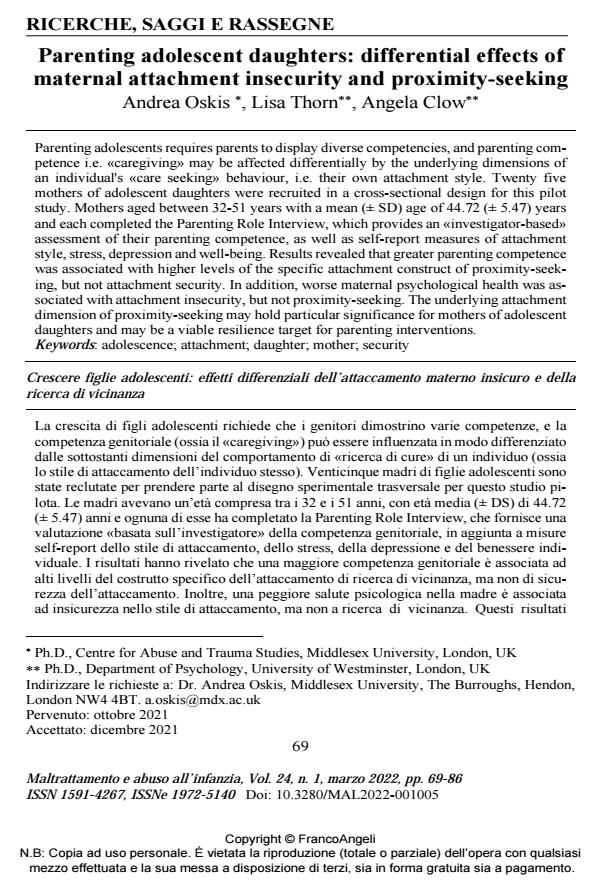Parenting adolescent daughters: differential effects of maternal attachment insecurity and proximity-seeking
Titolo Rivista MALTRATTAMENTO E ABUSO ALL’INFANZIA
Autori/Curatori Andrea Oskis, Lisa Thorn, Angela Clow
Anno di pubblicazione 2022 Fascicolo 2022/1
Lingua Inglese Numero pagine 18 P. 69-86 Dimensione file 198 KB
DOI 10.3280/MAL2022-001005
Il DOI è il codice a barre della proprietà intellettuale: per saperne di più
clicca qui
Qui sotto puoi vedere in anteprima la prima pagina di questo articolo.
Se questo articolo ti interessa, lo puoi acquistare (e scaricare in formato pdf) seguendo le facili indicazioni per acquistare il download credit. Acquista Download Credits per scaricare questo Articolo in formato PDF

FrancoAngeli è membro della Publishers International Linking Association, Inc (PILA)associazione indipendente e non profit per facilitare (attraverso i servizi tecnologici implementati da CrossRef.org) l’accesso degli studiosi ai contenuti digitali nelle pubblicazioni professionali e scientifiche
Parenting adolescents requires parents to display diverse competencies, and parenting competence i.e. «caregiving» may be affected differentially by the underlying dimensions of an individual's «care seeking» behaviour, i.e. their own attachment style. Twenty five mothers of adolescent daughters were recruited in a cross-sectional design for this pilot study. Mothers aged between 32-51 years with a mean (± SD) age of 44.72 (± 5.47) years and each completed the Parenting Role Interview, which provides an «investigator-based» as-sessment of their parenting competence, as well as self-report measures of attachment style, stress, depression and well-being. Results revealed that greater parenting competence was associated with higher levels of the specific attachment construct of proximity-seeking, but not attachment security. In addition, worse maternal psychological health was associated with attachment insecurity, but not proximity-seeking. The underlying attachment dimension of proximity-seeking may hold particular significance for mothers of adolescent daughters and may be a viable resilience target for parenting interventions.
Parole chiave:adolescence; attachment; daughter; mother; security
Andrea Oskis, Lisa Thorn, Angela Clow, Parenting adolescent daughters: differential effects of maternal attachment insecurity and proximity-seeking in "MALTRATTAMENTO E ABUSO ALL’INFANZIA" 1/2022, pp 69-86, DOI: 10.3280/MAL2022-001005